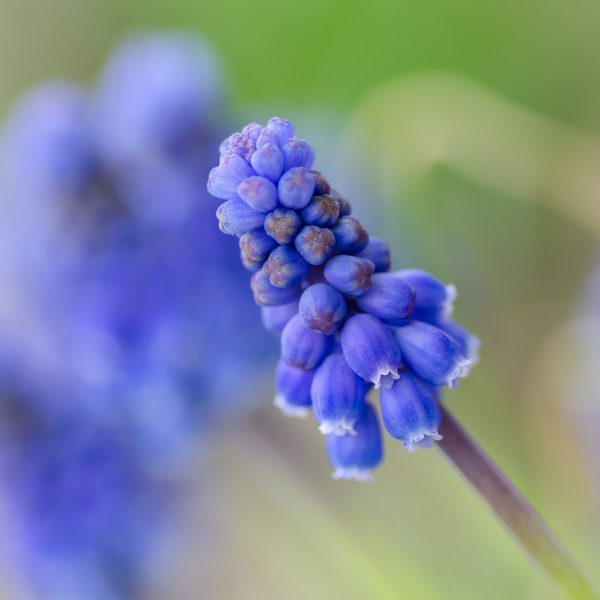Several studies show that the antioxidant astaxanthin, pronounced “asta-zan-thin”, may be supportive of sperm health and in particular sperm motility. Sperm motility defines a sperm’s strength and ability to properly move and swim forward.
What is Astaxanthin?
Dubbed the “king of all carotenoids” and believed to the most potent antioxidant nature has to offer us, astaxanthin is one of more than 700 naturally occurring carotenoids – the compounds that give fruits and vegetables, and even some marine and aquatic life, their vibrant array of colors.
Astaxanthin is a fat-soluble, biologically active compound produced by the microalgae Haematococcus pluvialis. This microalga and the sea creatures that eat it (salmon, shellfish and krill) are the only natural sources of astaxanthin.
Astaxanthin is most widely studied and talked about for enhancing endurance, sports recovery, and to support heart, brain, and eye health. Recently, clinical trials have been conducted to learn the relationship between astaxanthin and sperm health.
Astaxanthin for Sperm Health
Around 40% of infertile men have high levels of free radicals in their semen. This may be due to exposure to environmental toxins, poor diet and unhealthy lifestyle habits such as smoking cigarettes. Sperm also produce high quantities of free radicals as they work hard to traverse the many challenges along their journey to the awaiting egg. These challenges can be anything from simply having to move through the uterus itself, cervical mucus, and the thick gelatinous outer layer that surrounds an egg called the cumulus oophorus (it takes a lot of energy to break through this layer of cells).
In one double-blind randomized controlled trial to evaluate astaxanthin’s use in protecting sperm function and male fertility, thirty men from infertile couples (where the female partner had no fertility issues) received either astaxanthin (16 mg/day) or a placebo for three months. The men provided semen for IUI during the three months and the occurrence of pregnancy was recorded. By the end of three months, sperm motility was significantly increased and semen free radical production was decreased in the astaxanthin group versus the placebo group. Most noted in this study was the pregnancy rate, which was 54.5 percent for the astaxanthin group compared to 10.5 percent for the placebo group.
Because of the powerful antioxidant actions astaxanthin provides, potential fertility benefits may be to…
- Enhance reproductive health
- Stabilize blood sugar
- Boost immune system function
- Reduce inflammation of all causes; it is a powerful anti-inflammatory agent
- Improve male fertility by increasing sperm strength, quality, motility and sperm count
- Improve endurance
- Reduce oxidative damage to DNA
- Reduce pain – astaxanthin blocks COX 2 enzymes, which may be potentially supportive for reproductive organ pain
Suggested Use:
General suggested use is naturally-sourced astaxanthin, or as a food-based nutritional supplement at 40 mg/day or less – most clinical trials have used a dose in the 6-12 mg range – taken with a high-quality fat with or immediately prior to meals.
Synthetic astaxanthin is made in a laboratory and sold in supplement form, but should be avoided because it is made from petrochemicals that cause free-radical damage within the body.
Astaxanthin may be worth researching and speaking to your healthcare provider about if you suspect male factor infertility, compromised immune system function, and/or inflammation to be contributors to your infertility. There are no reported safety issues with consuming natural astaxanthin, but if you are taking any medications, speak with your healthcare provider before adding it to your program.
- Ashok Agarwal & Lucky H. Sekhon. The role of antioxidant therapy in the treatment of male infertility. Human Fertility, December 2010; 13(4): 217–225. Retrieved from: http://www.ccf.org/ReproductiveResearchCenter/docs/agradoc384.pdf
- Comhaire, F.H, Garem, Y. El., Mahmoud, A., et al. (2005) Combined conventional/antioxidant “Astaxanthin” treatment for male infertility: a double blind, randomized trial. Asian J Androl. 2005 Sep;7(3):257-62. Retrieved from: http://www.asiaandro.com/Abstract.asp?doi=10.1111/j.1745-7262.2005.00047.x
- Mercola, J. Help Make Your Body 62% Stronger, Flood it With Astaxanthin. Retrieved from: http://articles.mercola.com/sites/articles/archive/2011/06/15/benefits-of-astaxanthin-to-your-health.aspx
- Guerin, M., Huntley, M.E., and Olaizola, M. (2003) Haematococcus Astaxanthin: applications for human health and nutrition. TRENDS in Biotechnology, 21(5) Retrieved from: http://www.cyanotech.com/pdfs/bioastin/batl09.pdf
- Murray, M. & Pizzorno, J. (1998) Encyclopedia of Natural Medicine. Revised 2nd Edition. Male Infertility; Nutritional Considerations. pgs 581-583.
- Kidd, P. (n.d.) Monograph. Astaxanthin, Cell Membrane Nutrient with Diverse Clinical Benefits and Anti-Aging Potential. Retrieved from: http://archive.foundationalmedicinereview.com/publications/16/4/355.pdf
- Ross, C., Morriss, A., Khairy, M., Khalaf, Y., Braude, P., Coomarasamy, A., & El-Toukhy, T. (2010). A systematic review of the effect of oral antioxidants on male infertility. Reproductive Bio Medicine Online, 20(6), 711-723. doi:10.1016/j.rbmo.2010.03.008. Retrieved from: https://www.rbmojournal.com/article/S1472-6483%2810%2900133-1/abstract?cc=y.%20DOI:%20http://dx.doi.org/10.1016/j.rbmo.2010.03.008
- Cohen, S. 5 Reasons to Take Astaxanthin Every Day. Retrieved from: http://www.huffingtonpost.com/suzy-cohen-rph/astaxanthin_b_2750910.html
- Kuroki, T., Ikeda, S., Okada, T., Maoka, T., Kitamura, A., Et al. (May 2013). Astaxanthin ameliorates heat stress-induced impairment of blastocyst development In Vitro: –astaxanthin colocalization with and action on mitochondria– Volume 30, Issue 5, pp 623–631. Journal of Assisted Reproduction and Genetics. Retrieved from: http://link.springer.com/article/10.1007/s10815-013-9987-z





